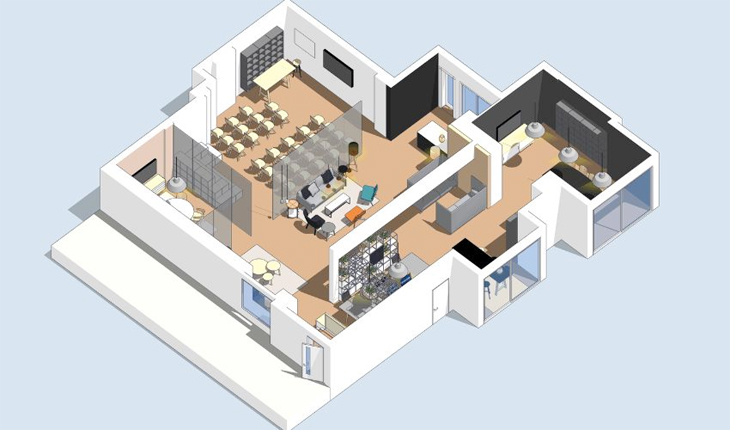A SketchUp course is a great way to learn the ins and outs of this powerful 3D modeling software. Whether you’re a beginner or looking to enhance your skills, such a course can help you master the tools and techniques needed to create stunning designs. From basic shapes to intricate architectural structures, a SketchUp course can provide you with the knowledge and practice to bring your ideas to life. Best Online Sketchup Course
By completing a SketchUp course, you can gain hands-on experience with features like creating 3D models, applying textures, and working with layers. This practical training can boost your confidence in using SketchUp for various projects, such as interior design, landscaping, or even creating models for 3D printing. Additionally, the course may cover advanced topics like rendering, animation, and plugins, allowing you to further expand your skills and creativity in 3D modeling.
Furthermore, a SketchUp course can offer insights into best practices for efficient workflows and collaboration, enabling you to work seamlessly with others on projects. Learning how to optimize your process and streamline tasks can save you time and improve the quality of your work. Additionally, by gaining proficiency in SketchUp, you may open up new opportunities for freelance work, design projects, or even career advancement in industries such as architecture, engineering, or game design. Best Online Sketchup Course
Sketchup Course Outline
Module 1: Introduction to SketchUp
- SketchUp and Its Applications
- SketchUp Interface and Workspace
- Differences: SketchUp Free vs. SketchUp Pro
Module 2: Getting Started with Basic Tools
- Navigating within the SketchUp Environment Orbit, Pan, and Zoom
- Selection Techniques
- Selecting Edges
- Faces
- Entities
- Basic Drawing Tools
- Lines
- Rectangles
- Circles
- Polygons
Module 3: Building Basic 3D Models
- Using the Push/Pull Tool for Creating 3D Forms
- Moving, Rotating, and Scaling Objects
- Offset and Follow Me Tools
Module 4: Working with Components and Groups
- Benefits of Grouping Objects
- Creating, Editing, and Importing Components
- Utilising the 3D Warehouse
Module 5: Materials and Textures
- Applying Materials to Objects
- Editing Material Properties
- Size
- Rotation
- Position
- Importing Custom Textures
Module 6: Cameras and Views
- Setting Up and Saving Views
- Creating Scenes for Presentations
- Using the Walk-through and Look-around Camera Tools
Module 7: Lighting and Shadows
- Adjusting Time of Day and Year for Realistic Shadows
- Introduction to Artificial Lighting and Effects
- Using the Geo-Location Feature for Site Context
Module 8: Extensions and Plugins
- Overview of the Extension Warehouse
- Recommended Extensions for Beginners
- Installing and Managing Extensions
Module 9: Basic Rendering Techniques
- Introduction to Rendering in SketchUp
- Choosing and Adjusting Styles for Desired Effects
- Exporting Images and Animations
Module 10: Layout and Presentation
- An Introduction to SketchUp Layout
- Setting Up Pages and Title Blocks
- Exporting 2D Drawings
- Plans
- Sections
- Elevations
What is SketchUp ?
SketchUp is a 3D modeling software known for its user-friendly interface. It allows users to create, modify, and share 3D models with ease. This makes it popular among architects, designers, and hobbyists for its versatility and intuitive tools.
SketchUp’s versatility extends beyond its user-friendly interface. It also offers a vast library of plugins and extensions that allow users to customize their workflow to suit their specific needs. Additionally, SketchUp integrates seamlessly with other design software, making it a powerful tool for professionals looking to streamline their design process and collaborate with others in the industry.
SketchUp’s accessibility and collaborative features make it a valuable tool for teams working on projects that require detailed 3D modeling and visualization. By enabling users to easily share and collaborate on models, SketchUp fosters efficient communication and idea sharing among team members. This not only streamlines the design process but also enhances creativity and productivity within the team.
Moreover, SketchUp’s compatibility with virtual reality (VR) and augmented reality (AR) technologies opens up new possibilities for users to visualize and present their designs in immersive ways. By leveraging these technologies, users can provide clients and stakeholders with more interactive and engaging experiences, helping them better understand the spatial relationships and design concepts. This integration of VR and AR capabilities further solidifies SketchUp’s position as a cutting-edge tool for 3D modeling and design visualization.
In addition to its design capabilities, SketchUp also offers robust documentation features that enable users to create detailed drawings, annotations, and reports for their projects. This functionality not only helps users communicate their design intent clearly but also aids in project management and collaboration by providing a comprehensive overview of the project details. Overall, SketchUp’s combination of intuitive design tools, collaborative features, and documentation capabilities makes it a versatile and powerful software for a wide range of professionals in the architecture, design, and construction industries. Best Online Sketchup Course

